Welcome to my key spec and feature comparison between the full-frame Sony A7C II and the APS-C Sony A6700 mirrorless cameras.

In this article I’ll be taking a look at the key differences between these two compact mirrorless cameras as well as what they share in common.
I’ve also included a complete specification comparison as well as links to helpful guides and resources for each camera.
Table of Contents[Hide][Show]
Summary
The biggest difference between these two cameras remains the sensor size.
The larger sensor in the A7C II will give it a small advantage in image quality and low light performance over the A6700. The ability to shoot uncompressed RAW files with the A7C II will also be advantageous to some.
But this larger sensor will cost you around $800 extra and you’ll also spend a lot more purchasing full-frame lenses.
Ultimately the choice will probably come down to the size of your budget and whether or not you really need a full-frame sensor.
Key Feature Differences
First let’s take a closer look at the main key feature differences between these two cameras.
Sensor & Image Quality
The first and most significant difference between these two cameras is that the A7C II has a full-frame sensor whereas the A6700 has a smaller APS-C sized sensor.
Full-frame sensors are physically larger than APS-C sensors but bigger isn’t always better and each format has its own distinct advantages.
The table below compares the size of each cameras sensor.
| Camera | Sensor Size | Megapixels | Resolution (3:2) |
|---|---|---|---|
| Sony A7C II | Full-Frame (35.9 x 23.9 mm) | 33 MP | 7008 x 4672 |
| Sony A6700 | APS-C size (23.3 mm × 15.5 mm) | 26 MP | 6192 × 4128 |
The A7C II features a 33 megapixel full-frame 35mm back-illuminated Exmor R CMOS sensor that provides high-speed readout, high sensitivity, low noise, and highly accurate color reproduction. This is the same sensor that can be found in the Sony A7 IV.
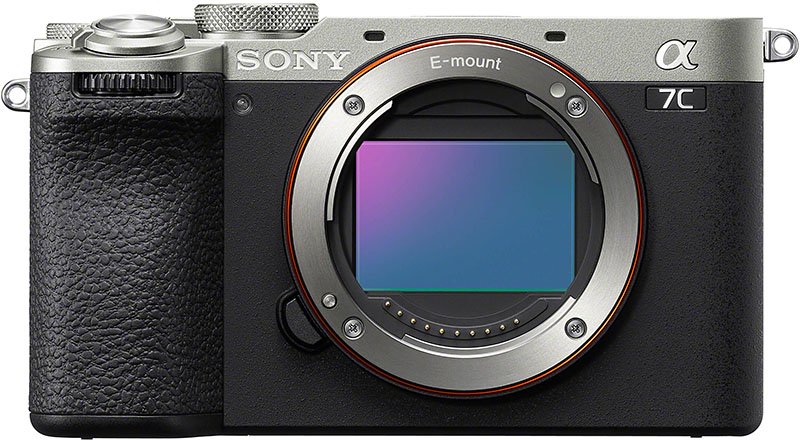
The Sony A6700 features a 26 megapixel APS-C Back-illuminated Exmor R CMOS sensor that can also be found in the Sony FX30 cinema camera.
The full-frame sensor in the A7C II helps to give this camera a one stop advantage when it comes to focusing in low-light in AF-S mode.
- A7C II: EV-4 to EV20 (ISO 100 equivalent with F2.0 lens attached)
- A6700: EV-3 to EV20 (ISO 100 equivalent with F2.0 lens attached)
ISO Sensitivity
The A7C II has a wider ISO range largely thanks to its full-frame sensor which has better light gathering capabilities.
| Sony A7C II | Sony A6700 | |
|---|---|---|
| Normal ISO (Stills): | ISO 100-51200 | ISO 100-32,000 |
| Expanded ISO (Stills): | ISO 50-204800 | ISO 50-102,400 |
| Normal ISO (Movies): | ISO 100-51200 | ISO 100-32,000 |
| Expanded ISO (Movies): | ISO 100-102400 | ISO 100-32,000 |
Still Image Recording Formats
The A7C II offers compressed and uncompressed RAW 14-bit files along with JPEGs and HEIF file types. Lossless compressed RAW is also available with three lossless-compression image sizes (S/M/L). There’s also a Light image quality selection that generates less data for JPEG and HEIF images.

The A6700 only offers compressed RAW, JPEG, HEIF (with Light option). There is no support for uncompressed RAW or lossless compressed file types.
Movies
Both cameras are able to record 4K video in 10-bit 4:2:2 internally and feature an extensive range of settings and profiles such as S-Log3, HLG, and S-Cinetone.
However due to the difference in sensor size there are some important differences when it comes to cropping.
The A7C II can capture 4K30p by oversampling from a 7K region of its sensor with zero crop. 4K 50/60p is however only possible when using Super35 mode (APS-C crop) which introduces a 1.5x crop. You also get Full HD at up to 120 fps.
The A6700 can shoot up to 4K60p with a small 1.04x crop. It also supports high frame rate recording of up to 120p for 4K QFHD (3840 x 2160) but this is with a 1.58x crop.
In-Body Stabilization (IBIS)
Both cameras feature Sony’s 5-axis in-body optical image stabilization (IBIS) mechanism that detects and compensates for camera shake along five different axes, including angular (pitch and yaw), horizontal, vertical and rotational, for stabilization equivalent to a 5-step faster shutter speed setting.
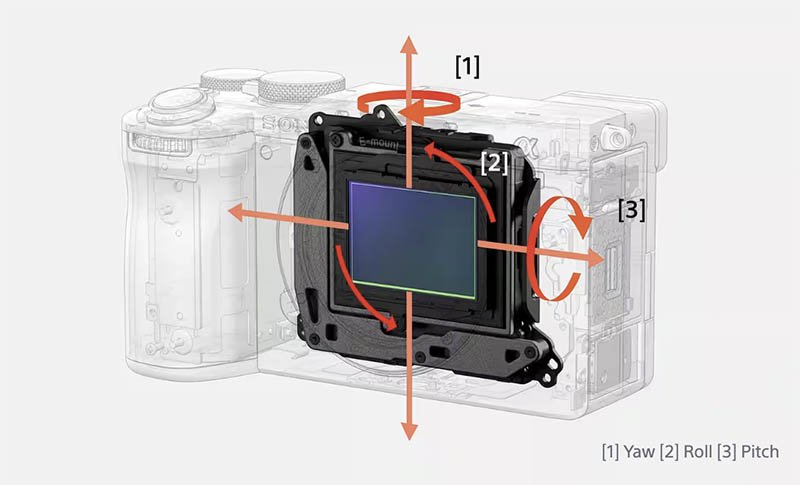
With IBIS enabled on the A7C II you can benefit from 7 stops of compensation. On the A6700 this drops down to 5 stops of compensation.
Shutter
The Sony A7C II features a an electronic-first curtain shutter (EFCS), in addition to a full electronic shutter.
However, to confuse things Sony refers to the EFCS as a mechanical shutter when really its only half mechanical. In this case, the first of the two “shutter curtains” is electronic, while the second is the traditional mechanical blade.
The Sony A6700 on the other hand features a full mechanical shutter with an EFCS option and also a full electronic shutter.
I’d recommend watching this video from Mark Galer who explains in a lot more detail the issues when using EFCS.
When utilizing the mechanical shutter or ECFS on the A7C II the speed is limited on both cameras to a maximum of 1/4000s. When shooting with the electronic shutter the maximum speed increases to 1/8000s. It’s also the same for the A6700.
The Sony A7C II is also equipped with the [Shutter When Power Off] function that closes the shutter when the camera is powered off, helping to protect the image sensor from dust and particles while changing lenses. This is not available on the A6700.
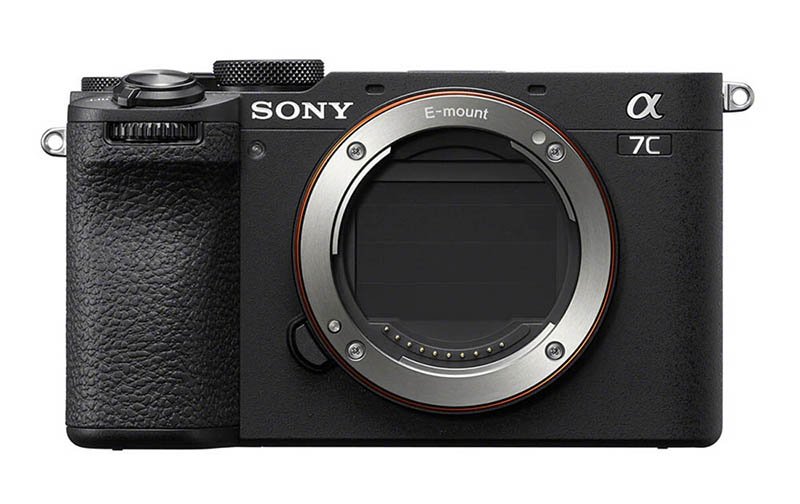
Drive Speed and Buffer
The A7C II can shoot at up to 10 fps using either its Mechanical (Electronic-First Curtain Shutter (EFCS) or Electronic Shutter.
The A6700 can shoot up to 11 fps with both its Mechanical and Electronic Shutter.
So with just a single frame between them I wouldn’t expect that the continuous drive speed will be a deciding factor here.
The buffer capacity varies a little more between the cameras. The following table illustrates the number of shots that can be taken by file format before the buffer is full.
| JPEG Extra Fine | JPEG Fine | Uncompressed RAW | Compressed RAW | Lossless Compressed RAW | HEIF | |
|---|---|---|---|---|---|---|
| A7C II | 88 | 1000+ | 18 | 44 | 27 | Over 1000 |
| A6700 | 143 | 1000+ | – | 59 | 23 | Over 1000 |
Body & Controls
The bodies are very similar but if you look closely you’ll spot a couple of differences besides the different sized sensor.
The A6700 has a C1 customizable button on the right side of the camera and a C2 button on the top. Whilst the A7C II has its C1 button next to the menu button on the rear, the C2 button is shared with the trash can which is C3 on the A6700.
The rear control dials are slightly different with the one on the A7C II just above the AF-On button whereas on the A6700 it sits right/top.
The dimensions and weights of each camera are as follows:
- A7C II: W/H/D: 124.0 mm x 71.1 mm x 63.4 mm, (approx. 429 g / 0.95 lbs. body only)
- A6700: W/H/D: 122.0 x 69.0 x 75.1 mm, (approx. 409 g / 0.90 lbs. body only)
The A7C II is available in black or black/silver colors whilst the A6700 is available in black only.
Sony A7C II
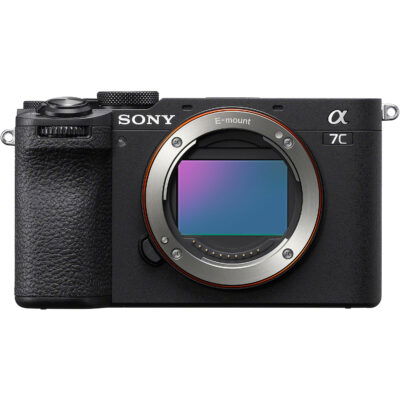
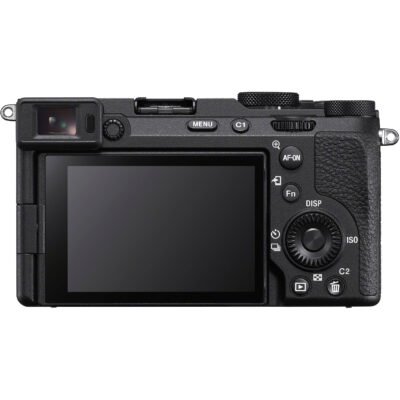

Sony A6700
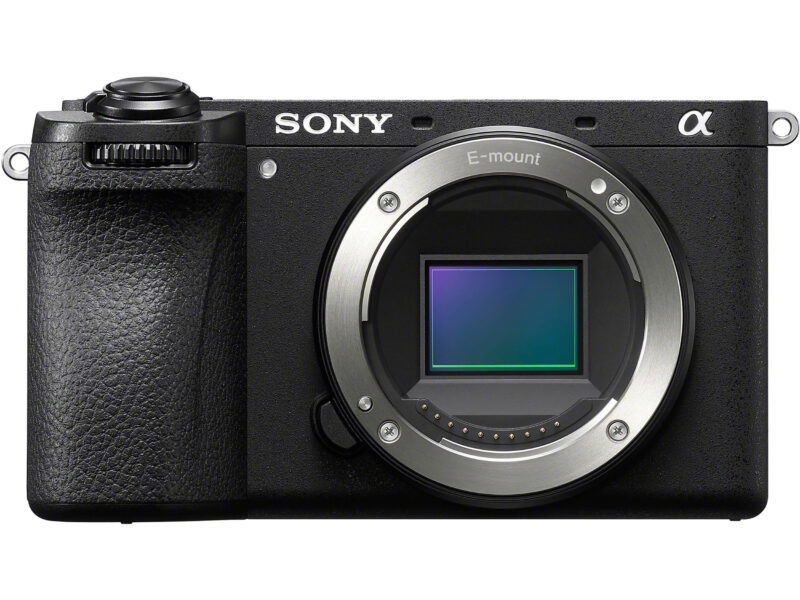
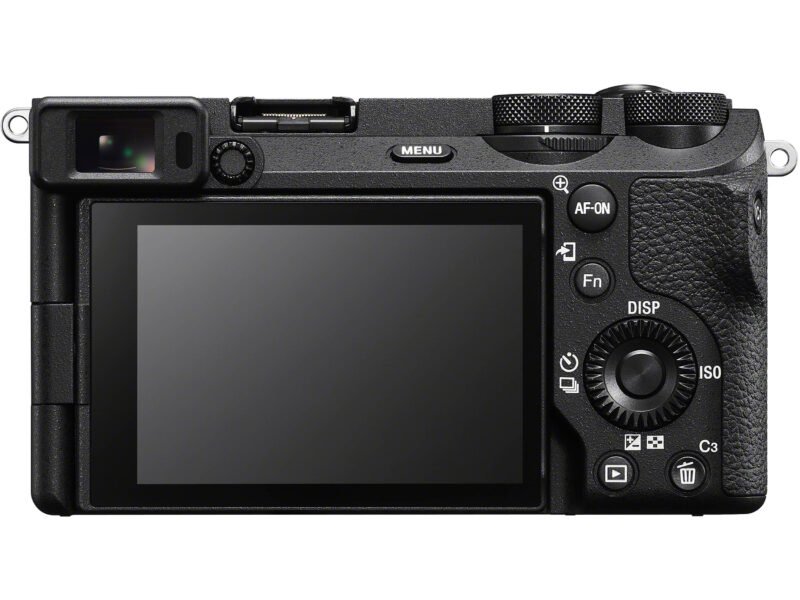
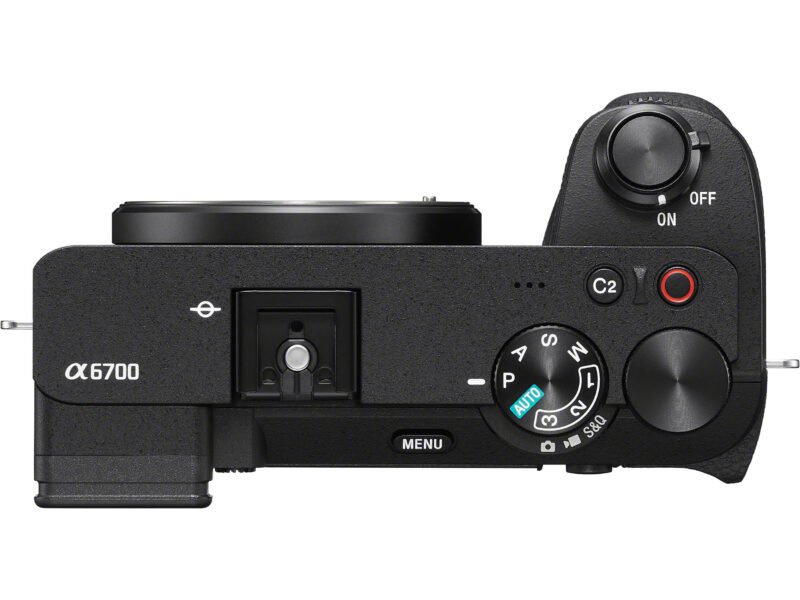
Sony GP-X2 Grip Extension
Sony has created a grip extension for the A7C II but you’ll need to purchase it separately for $158.00 (Check Price at B&H Photo).

There is no official grip extension from Sony for the A6700 but there are third-party options available. The SmallRig Baseplate 4338 is one such option (B&H Photo).
Key Features In Common
Despite some big differences these two cameras still share a lot of features in common, these include:
Autofocus
Both cameras are equipped with an AI processing unit that greatly increases AF performance compared to models with an AI processing unit.
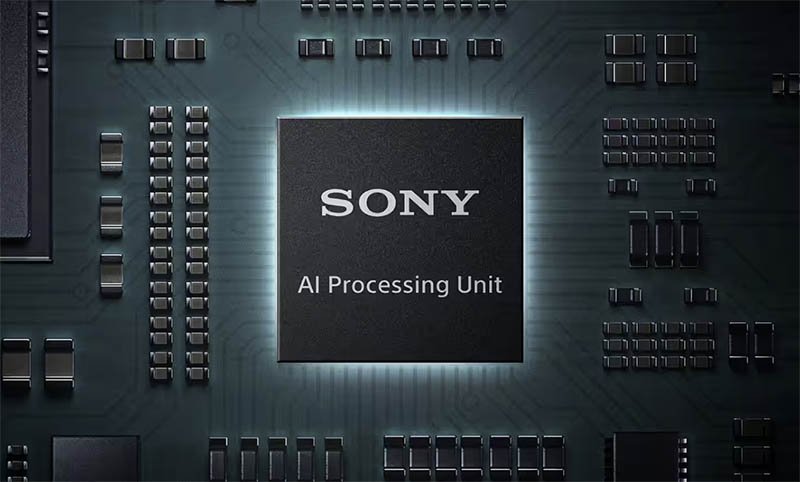
Both cameras can recognize humans, animals, birds, insects, cars, trains and airplanes.
| Subject Detection | A7C II / A6700 |
|---|---|
| Humans | Face, Head, Eyes, Body |
| Animals | Body, Head, Eyes |
| Birds | Body, Head, Eyes |
| Insects | Yes |
| Cars | Yes |
| Trains | Yes |
| Airplanes | Yes |
They also feature human pose estimation technology that uses a skeleton-based model, enabling the cameras to recognise not just eyes, but also body and head positions with high precision.
Electronic Viewfinder and LCD Display
Both cameras feature the same electronic viewfinders (EVF) and LCD displays.
Electronic Viewfinder (EVF)
Each camera features a 2.36 million dot OLED viewfinder. On the A7C II the magnification is 0.70x. and on the A6700 it’s 1.07x (0.70x FF equiv.)
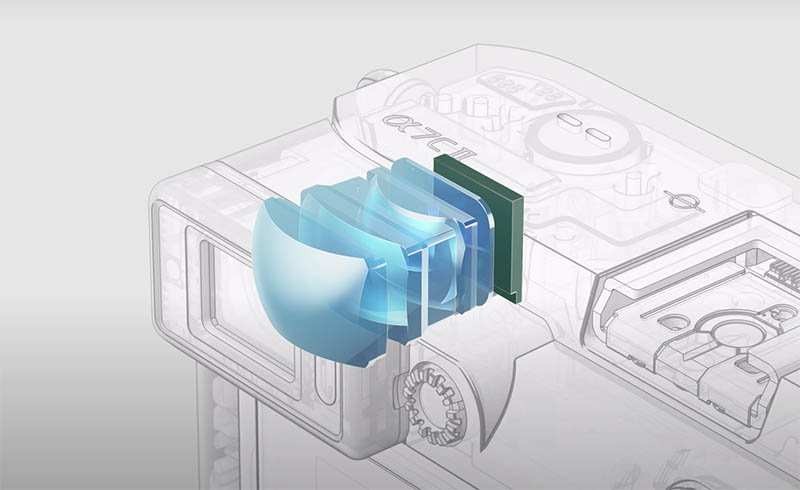
LCD Display
Both cameras feature a 2.95 inch (3.0-type) TFT display with a resolution of 1 036 800 dots.
Both displays are vari-angle touch displays with an opening angle of approx. 176 deg and a rotation angle of approx. 270 deg.
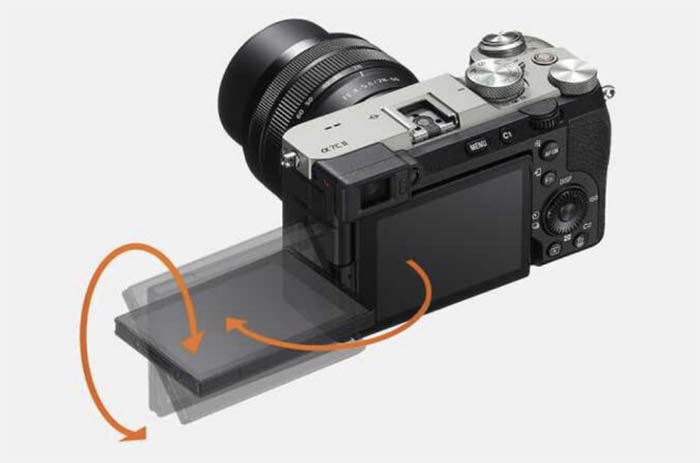
Menu and Touch Control
Both cameras benefit from the latest menu design and improved touch functionality including swiping.
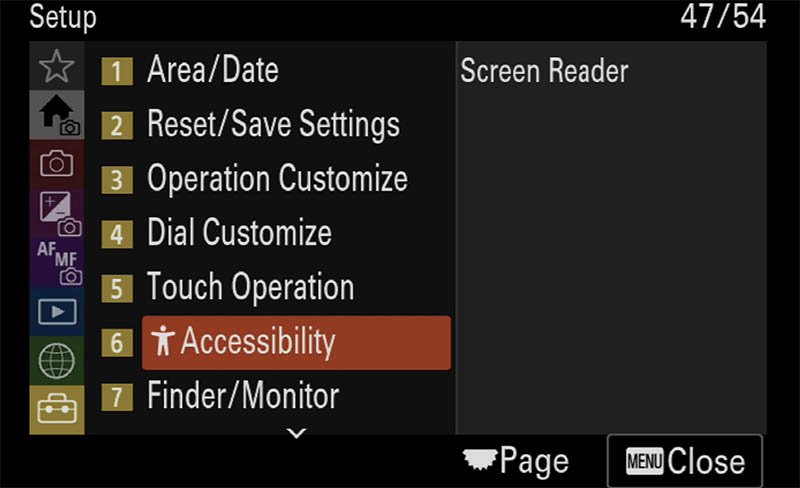
A screen reader function also reads text on the menu screens aloud, with volume and reading speed adjustable as needed.
Connectivity
Both cameras feature the same connectivity options.
- 2.4 / 5 Ghz Wi-Fi
- Bluetooth standard Ver. 4.2
- Micro HDMI port (type D micro jack)
- SuperSpeed USB-C 5 Gbps (USB 3.2)
- Microphone jack (3.5 mm)
- Headphone jack (3.5 mm)
- Multi Interface (MI) Shoe with digital audio
Both cameras support Sony’s Creators App for remote control and file management.
The Sony RMT-P1BT Bluetooth Remote (B&H Photo | Amazon) is also supported by both cameras.

Live Streaming / Webcam
Both cameras can also function as a 4K (2160p) webcam with advanced AF that makes online meetings and live streaming events even smoother. Eye tracking is also possible.
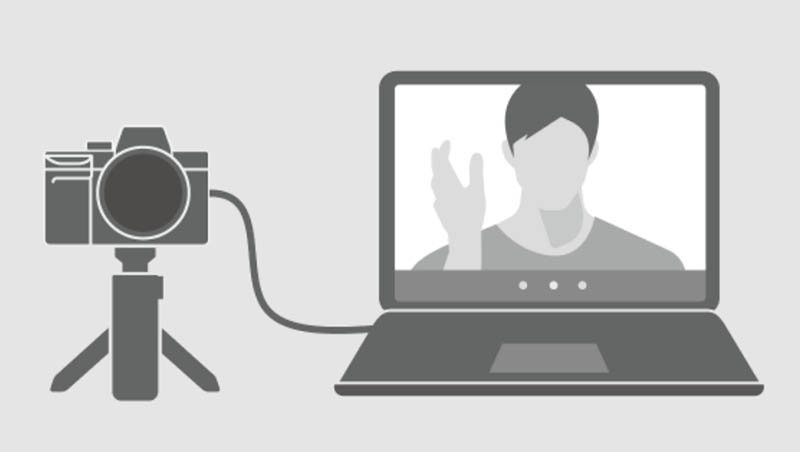
Firmware Updates
Both cameras allow for firmware updates via memory card which is a lot easier than connecting the camera to a computer.
Memory Cards
Both cameras feature a single memory card slot on the side of the camera that supports UHS-I / II SD cards.
Please visit my Sony A7C II Memory Card Guide to learn more about the best memory cards for the A7C II. Or my Sony A7C R Memory Card Guide for the A7C R.
Battery
Both cameras utilize the Sony NP-FZ100 battery and although the battery life varies a little between them it’s nothing to really shout about.
| A7C II | A6700 | |
|---|---|---|
| Battery Life Stills (Viewfinder) | 530 frames (CIPA standard) | 550 frames (CIPA standard) |
| Battery Life Stills (Rear LCD) | 560 frames (CIPA standard) | 570 frames (CIPA standard) |
| Battery Life Video Actual (Viewfinder) | 100 minutes (CIPA standard) | 95 minutes (CIPA standard) |
| Battery Life Video Actual (Rear LCD) | 105 minutes (CIPA standard) | 100 minutes (CIPA standard) |

Additional Features In Common
There are many more features that these two cameras share in-common, these include:
- BIONZ XR processor
- Stills / Movies / S&Q Dial
- Focus Map
- AF Assist
- Real-time Tracking for Movies
- Active Mode Enhanced Movie Image Stabilization
- Breathing Compensation
- Import User LUT files
- Auto Framing
- In-camera Time-Lapse / Interval Shooting
- Creative Look
- Full Time DMF
- Focus bracketing
- USB Charging + Power Delivery
Price Comparison
The A7C II costs around $800 more than the A6700. But this is not the only extra cost because the full-frame lenses will also cost you more money than APS-C lenses.
Please visit my Sony E-Mount Lenses Guide for a complete list of all full-frame and APS-C E-mount lenses.
| Sony A7C II | Sony A6700 | |
|---|---|---|
| MRSP Body-Only | $2,198.00 / £2,099.00 | $1,398.00 / £1,449.00 |
| Check Prices / Deals | B&H Photo | Amazon | B&H Photo | Amazon |
What’s in the Box
The box contents of each camera are similar except the A6700 includes an eyepiece cup. The eyepiece of the A7C II is not detachable therefore it’s not included.
Sony has excluded the USB Adaptor and Micro USB cable (B&H Photo) from both camera boxes. So hopefully you already have one at home.
| Sony A7C II | Sony A6700 |
|---|---|
| Sony A7C II Body | Sony A6700 Body |
| Rechargeable Battery NP-FZ100 | Rechargeable Battery NP-FZ100 |
| Shoulder strap | Shoulder strap |
| Body cap | Body cap |
| Accessory shoe cap | Accessory shoe cap |
| Eyepiece cup |
Summary
The biggest difference between these two cameras remains the sensor size.
The larger sensor in the A7C II will give it a small advantage in image quality and low light performance over the A6700. The ability to shoot uncompressed RAW files with the A7C II will also be advantageous to some.
But this larger sensor will cost you around $800 extra and you’ll also spend a lot more purchasing full-frame lenses.
Ultimately the choice will probably come down to the size of your budget and whether or not you really need a full-frame sensor.
If you found this comparison helpful please do drop a comment below.
Table of Contents[Hide][Show]
Reviews
I’d recommend watching the following reviews from Chris and Jordan to learn more about these two cameras.
Sony A7C II Guides & Resources
Sony A6700 Guides & Resources
Complete Feature & Spec Comparison
To make sure nothing is missed here’s a complete comparison of the features and specifications of each camera.
Key Features
| Feature | Sony A7C II | Sony A6700 |
|---|---|---|
| Announced | August 29th, 2023 | July 12th, 2023 |
| Camera Type | Mirrorless | Mirrorless |
| Sensor Size | 35mm full frame (35.9 x 23.9 mm) | APS-C (23.3 x 15.5 mm) |
| Sensor Type | Back-illuminated Exmor R™ CMOS image sensor | Back-illuminated Exmor R™ CMOS image sensor |
| Resolution | 33 MP | 26.0 MP |
| Sensor Pixel Size | 5.12µm | 3.76µm |
| Pixel Dimensions | 7008 x 4672 | 6192 x 4128 |
| Image Processor | BIONZ XR™ | BIONZ XR |
| Low Pass Filter | Yes | Yes |
| IBIS (In-Body Image Stabilization) | Yes (7 steps) | Yes (5 steps) |
| Base ISO Stills | ISO 100 | ISO 100 |
| Max Native ISO Stills | ISO 51200 | ISO 32,000 |
| Extended ISOs Stills | ISO 204800 | ISO 102,400 |
| High-Resolution Sensor Shift | No | No |
| Focus Bracketing | Yes | Yes |
| Full Time DMF | Yes | Yes |
| Pre-Shoot Burst Mode | No | No |
| Fastest Shutter Speed (Mechanical Shutter) | 1/4000 sec | 1/4000 sec |
| Fastest Shutter Speed (Electronic Shutter) | 1/8000 sec | 1/8000 sec |
| Longest Shutter Speed | 30 seconds + Bulb | 30 seconds + Bulb |
| Continuous Shooting (Mechanical Shutter) | 10 FPS | 11 FPS |
| Continuous Shooting (Electronic Shutter) | 10 FPS | 11 FPS |
| Notes for High FPS Shooting | The maximum speed is only possible shooting compressed RAW, JPEG or HEIF file types. Live View reduces to 8 FPS. | The speed of continuous shooting decreases when shooting in lossless compressed RAW. |
| Buffer Size (RAW Uncompressed) | 18 | – |
| Buffer Size (RAW Compressed) | 44 | 59 frames |
| Buffer Size (RAW Lossless Compressed) | 27 | 12 frames |
| Buffer Size (JPEG Extra Fine) | 88 | 143 frames |
| Buffer Size (JPEG Fine) | Over 1000 | 1000 + frames |
| Buffer Size (HEIF) | – | 1000 + frames |
| Autofocus System | Fast Hybrid AF (phase-detection AF / contrast-detection AF) | Fast Hybrid AF (phase-detection AF / contrast-detection AF) |
| AF Subject Detection | Humans, animals, birds, insects, cars/trains, and airplanes | Humans, animals, birds, insects, cars/trains, and airplanes |
| Autofocus Points | 759 | 759 |
| Maximum Low-Light AF Sensitivity (Standardized to f/2, ISO 100) | -4 EV | -3 EV |
| Standard Flash Sync Speed | 1/160 s (35mm full frame), 1/200 s (APS-C) | 1/160s |
| Curtain to Protect Sensor at Shutdown | Yes | No |
| Interval Shooting | Yes | Yes |
| Soft Skin Effect (stills / movies) | Yes | Yes |
| Creative Look | Yes | Yes |
| My Image Style | Yes | Yes |
| Background Defocus | No | No |
| Face Memory | – | Yes |
Video Specific Features
| Feature | Sony A7C II | Sony A6700 |
|---|---|---|
| Maximum Video Bit Depth (Internal) | 10 bits | 10 bits |
| Maximum Video Bit Depth (External) | 10 bits | 10 bits |
| Raw Video | No | No |
| 4K Maximum Frame Rate | 60p/50p | 120 FPS |
| 1080P Maximum Frame Rate | 120p | 240 FPS |
| Additional Video Crop Factor | 1.5x crop at 4K 60p | 1.04x crop at 4K 60p and 1.58x crop at 4K 120p |
| Chroma Subsampling | 4:2:2 | 4:2:2 |
| Video Recording Limit | No | No |
| S-Cinetone | Yes | Yes |
| Picture Profiles (stills/movies) | Yes | Yes |
| Active Stabilization | Yes | Yes |
| Focus Breathing Compensation | Yes | Yes |
| Import User LUT Files | Yes | Yes |
| AI Auto Framing | Yes | Yes |
| Focus Map | Yes | Yes |
| AF Assist | Yes | Yes |
| Time Code (TC) | Yes | Yes |
| In-Camera Time-Lapse Creation | Yes | Yes |
| Framing Stabilizer | – | No |
| Product Showcase Set | – | No |
| Cinematic Vlog Setting | – | No |
| Multiple Face Recognition in Intelligent Auto Mode | – | No |
Physical & Other Features
| Feature | Sony A7C II | Sony A6700 |
|---|---|---|
| Card Slots | 1 | 1 |
| Slot 1 Type | SD (UHS-II / I) | SD (UHS-II / I) |
| Rear LCD Size (Diagonal) | 7.5 cm (3.0-type) type TFT | 7.5 cm (3.0-type) type TFT |
| Rear LCD Resolution | 1 036 800 dots | 1 036 800 dots |
| Articulating LCD | Fully Articulating | Fully Articulating |
| Touchscreen | Yes | Yes |
| Viewfinder | EVF | EVF |
| Viewfinder Magnification | 0.70x | 1.07x (0.70x FF equiv.) |
| Viewfinder Resolution | 2 359 296 dots | 2 359 296 dots |
| Viewfinder Coverage | 100% | 100% |
| Voice Memo | No | No |
| Headphone Jack | Yes (3.5 mm Stereo minijack) | Yes (3.5 mm Stereo minijack) |
| Microphone Jack | Yes (3.5 mm Stereo minijack) | Yes (3.5 mm Stereo minijack) |
| Built-in Microphone | Built-in, stereo | Built-in, stereo |
| Built-in Flash | No | No |
| GPS | No | No |
| Bluetooth | Yes (Bluetooth Standard Ver. 4.2 (2.4 GHz band)) | Yes (Bluetooth Standard Ver. 4.2 (2.4 GHz band)) |
| WiFi | Yes (Wi-Fi Compatible, IEEE 802.11a/b/g/n/ac (2.4 GHz band/5 GHz band)) | Yes (Wi-Fi Compatible, IEEE 802.11a/b/g/n/ac (2.4 GHz band/5 GHz band)) |
| USB Type | Yes (SuperSpeed USB 5 Gbps (USB 3.2) compatible) | Yes (SuperSpeed USB 5 Gbps (USB 3.2) compatible) |
| Multi / Micro USB Terminal | No | No |
| HDMI Port | Yes. HDMI micro connector (Type-D) | Yes. HDMI micro connector (Type-D) |
| Multi Interface Shoe | Yes (with Digital Audio Interface) | Yes (with Digital Audio Interface) |
| Battery Type | NP-FZ100 | NP-FZ100 |
| Battery Life Stills (Viewfinder) | 530 frames (CIPA standard) | 550 frames (CIPA standard) |
| Battery Life Stills (Rear LCD) | 560 frames (CIPA standard) | 570 frames (CIPA standard) |
| Battery Life Video Actual (Viewfinder) | 100 minutes (CIPA standard) | 95 minutes (CIPA standard) |
| Battery Life Video Actual (Rear LCD) | 105 minutes (CIPA standard) | 100 minutes (CIPA standard) |
| Weather Sealed | Yes | Yes |
| Weight (Body Only) | Approx. 429 g (0.95 lbs.) | Approx. 409 g (0.90 lbs.) |
| Weight (With Battery & Card) | Approx. 514 g (1.13 lbs.) | Approx. 493 g (1.09 lbs.) |
| Dimensions (LxHxD) | Approx. 124.0 x 71.1 x 63.4 mm, Approx. 124.0 x 71.1 x 58.6 mm (from grip to monitor) / Approx. 5 x 2 7/8 x 2 1/2 inches, Approx. 5 x 2 7/8 x 2 3/8 inches (from grip to monitor) | Approx. 122.0 x 69.0 x 75.1 mm, Approx. 122.0 x 69.0 x 63.6 mm (FROM GRIP TO MONITOR) Approx. 4 7/8 x 2 3/4 x 3 inches, Approx. 4 7/8 x 2 3/4 x 2 5/8 inches (FROM GRIP TO MONITOR) |
| Operating Temperature | 0 – 40 ℃ / 32 – 104 °F | 0–40 °C/32–104 °F |




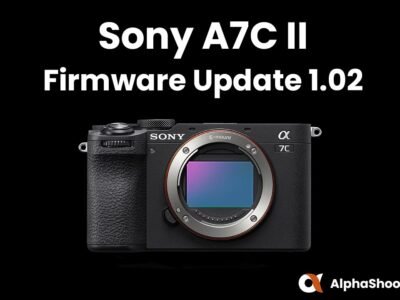

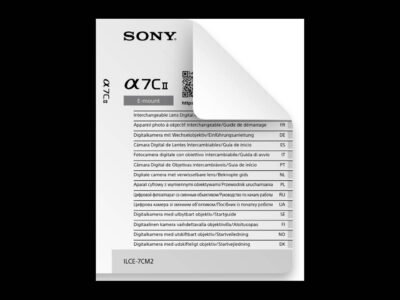
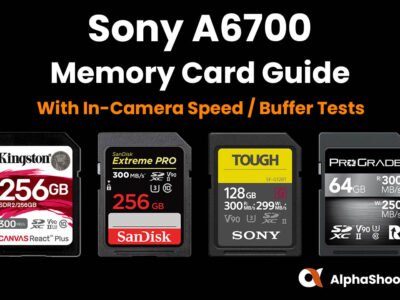

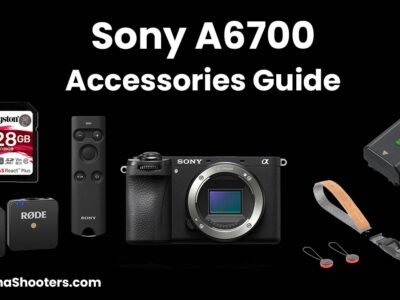
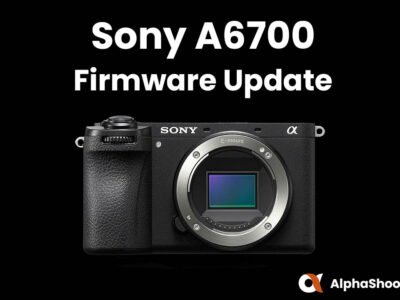
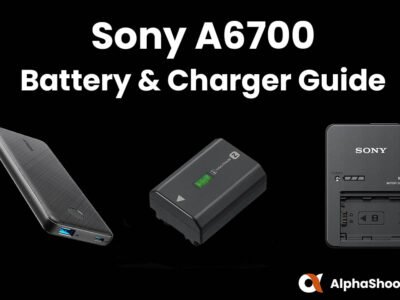



Gracias por esta reseña, ayuda mucho para elegir la cámara correcta para cada usuario. Tengo la A7IV me quería hacer de la a7cr de 61 mgp..solo por lujo. Pero para mi segunda cámara elegiría la a6700 que por su peso y manualidad, sólo para viajes. Gracias.
https://www.alphashooters.com/compare/sony-a7cii-vs-a6700/
says a7cii weight approx. 429 g / 0.94 lbs. with battery and memory card
but according to b&h and other sources it’s above 500g,
https://www.bhphotovideo.com/c/product/1784818-REG/sony_a7c_ii_mirrorless_camera.html/specs
1.1 lb / 514 g (With Battery, Recording Media)
https://www.dpreview.com/products/sony/slrs/sony_a7cii/specifications
Weight (inc. batteries) 514 g (1.13 lb / 18.13 oz)
Thanks for spotting that George. I’d got the weight down without battery and card, I’ve corrected that now and put both weights to avoid any confusion.